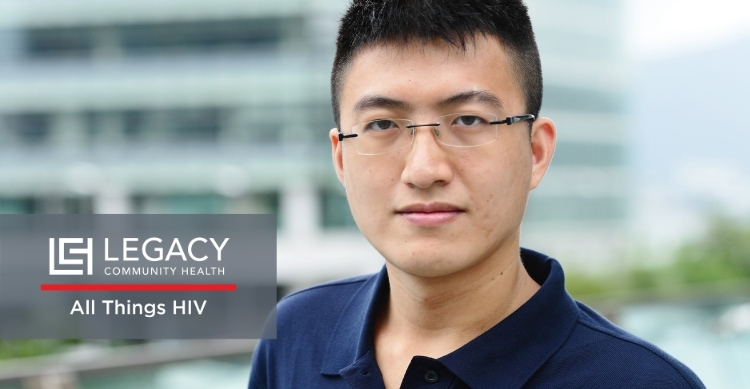May 19 is National Asian & Pacific Islander HIV/AIDS Awareness Day.
By Barrett White
May 19 is Asian and Pacific Islander HIV Awareness Day. The observance was first celebrated in 2005, an effort spearheaded by API Wellness. In the beginning of the AIDS crisis, the epidemic predominantly affected white gay men. Presently, the most at-risk demographic is Black men. Nowhere in the picture has there been a spotlight on the Asian and Pacific Islander (API) community. Consequently, this has resulted in low testing rates, stigma, and elevated rates of contraction of HIV.
According to the CDC, Asian Americans, who make up only 6 percent of the population of the U.S., make up 2 percent of all HIV infections. Asian and Pacific Islander HIV Awareness Day addresses this disparity by bringing awareness to the mainstream in an effort to normalize HIV care. Destigmatization is the first step.
Most recent data from the CDC reports that among Asian Americans, infection rates were steady between 2014 and 2018. While that may sound good, we would like to see a decrease. The CDC’s most recent data reflects that nearly 90 percent of male infections came from male-to-male sexual contact, while 98 percent of Asian American women living with HIV contracted the virus from heterosexual sexual contact.
Why is this small demographic taking on such a large proportion of HIV infection in comparison to the size of population, and why is there such little information on it? The CDC makes their own suggestions as to why the disparity is so great. It is suggested that cultural factors, such as language barriers and immigration issues, may add to the barrier to health care (though this only addresses access to care for Asian immigrants, and not Asian Americans who have lived here for several generations).
“The shame and stigma of going for an HIV test was especially true for me growing up,” says Kevin Aloysius, Pharmacy Manager at Legacy’s Montrose clinic. “I did not get an HIV test until I was 22.”
The CDC also poses the fact that there simply isn’t enough research being done on this demographic. According to the CDC website, “There are only a few targeted prevention programs due to limited research.”— According to the CDC, 66.5 percent of Asian Americans and 43.1 percent of Native Hawaiian or Other Pacific Islanders have never been tested for HIV—They continue, “Race/ethnicity misidentification could lead to an underestimation of HIV cases.”
Barriers to care like these can prevent one from even knowing that they’re living with HIV to begin with, let alone accessing treatment (ART) or pre-exposure prophylaxis (PrEP).
“We need to encourage APIs, especially those who are transgender and young [men who have sex with men], to start talking, get tested, and discuss PrEP with their doctors,” said Lance Toma, chief executive officer at API Wellness. “Everyone needs to know that saving face can’t make us safe.”
Toma continued, adding that low PrEP utilization rates are due to a lack of awareness about the drug, misconceptions regarding its affordability, misinformation about its effects, and fear of community stigma about sex.
It is known that daily PrEP use can reduce the risk of contracting HIV from sex by more than 90 percent. Among individuals who participate in injection drug use, it reduces the risk by more than 70 percent. But within the API community, 20 percent of those with HIV didn’t know they were infected, only 58 percent of those who knew were treated for their HIV, and of them, only 46 percent were retained in care.
“Although API HIV/AIDS infection rates appear low [at only 6 percent of total infections], those statistics are deceptive as a significant amount of under-reporting occurs due to stigma,” Toma said. “Stigma prevents people from discussing HIV/AIDS with their communities and providers which is one reason why APIs are the least likely race to get tested for HIV.”
Locally, statistics reported by the Houston Health Department reflect the national average. Roughly 4 percent of all HIV diagnoses in the City of Houston are categorized as “Other, Non-Hispanic” (presented alongside the categories White Non-Hispanic; Black Non-Hispanic; and All Races Hispanic). Of that 4 percent of all diagnoses, 76 percent were male. It bares clarification that “Other, Non-Hispanic” could include Houston’s API population, as well as Native American and biracial peoples.
“I am proud to be working for Legacy, which actively tries to reach communities of color by eliminating some of the barriers by providing free in-home HIV testing with virtual counseling and by hiring diverse staff who speak Vietnamese, Cantonese, Mandarin, Malayalam and Hindi,” Aloysius says. “Further, we provide the option to get your prescriptions delivered, as well as same-day PrEP and rapid start HIV treatment, which eliminates multiple trips to the clinic.”
Aloysius continues, “All of our services are provided to anyone that walks through our door, and we have a sliding scale program for folks who cannot afford to pay.”
May 19 is National Asian and Pacific Islander HIV Awareness Day. If you do not know your HIV status, Legacy recommends getting tested for HIV regularly – for free.
To learn more about HIV testing at a Legacy clinic or to make an appointment with a Legacy provider, click here or call (832) 548-5100.

